Private First Class Frank E. Wyatt
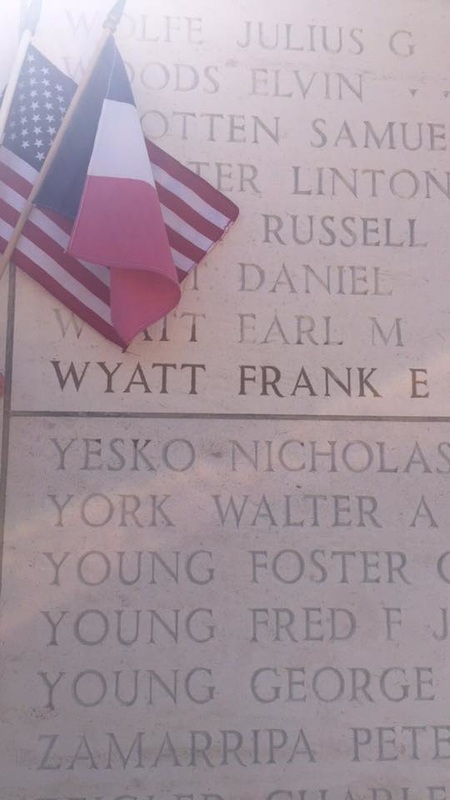
- Unit: 66th Division Division, 262nd Infantry Regiment
- Service Number: 6834376
- Date of Birth: October 1, 1913
- Entered the Military: September 7, 1939
- Date of Death: December 25, 1944
- Hometown: Reading, Illinois
- Place of Death: English Channel, off the coast of Cherbourg, France
- Award(s): Purple Heart
- Cemetery: Tablets of the Missing. Normandy American Cemetery, Colleville-sur-Mer, France
Mentored by Ms. Sarah Gehant
Mendota Township High School
2014-2015
Early Life
Born in Reading, Illinois, on September 10, 1913, to George and Lavina Wyatt, Frank was welcomed home by an older brother, Leo, and sister. His family was devastated when his mother passed away in 1916, and the family could not remain together.
By age 8, Frank moved to the La Salle County Detention Home, where he is listed as a ward of the state in the 1920 U.S. Federal Census. By 1930, he reunited with his family and moved to Streator to live with his cousins, Chauncey and Alice Woolley. There, he found work as a baker.
Wyatt’s military records reveal that he was in contact with his brother, Leo, living in Moxee, Washington. Leo was listed as Frank’s emergency contact. Additionally, both Leo and Alice Woolley, his cousin, are listed as beneficiaries in his insurance.
Records surrounding Wyatt’s movements in the early 1940s remain vague. He might have been living with his brother in Washington state.
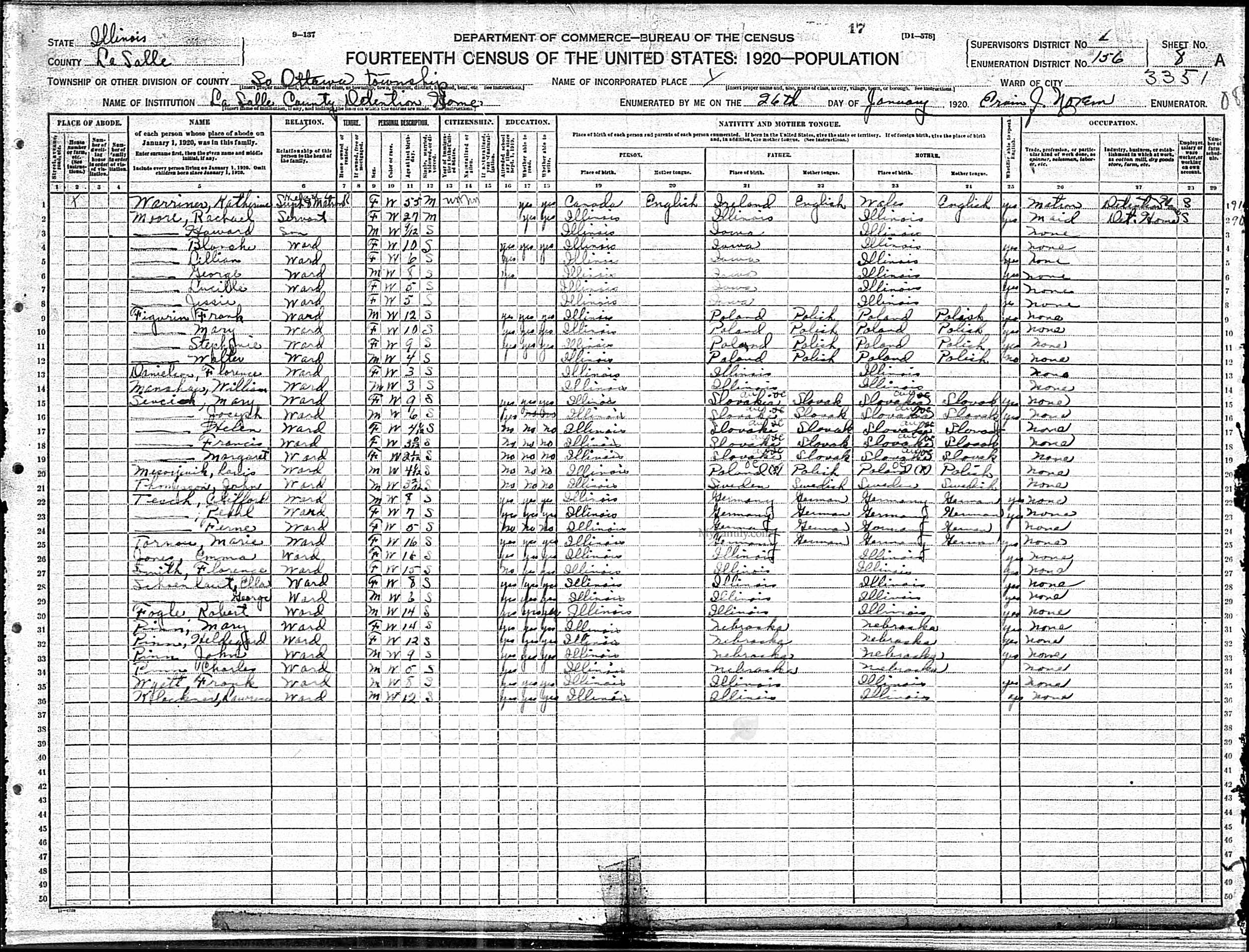
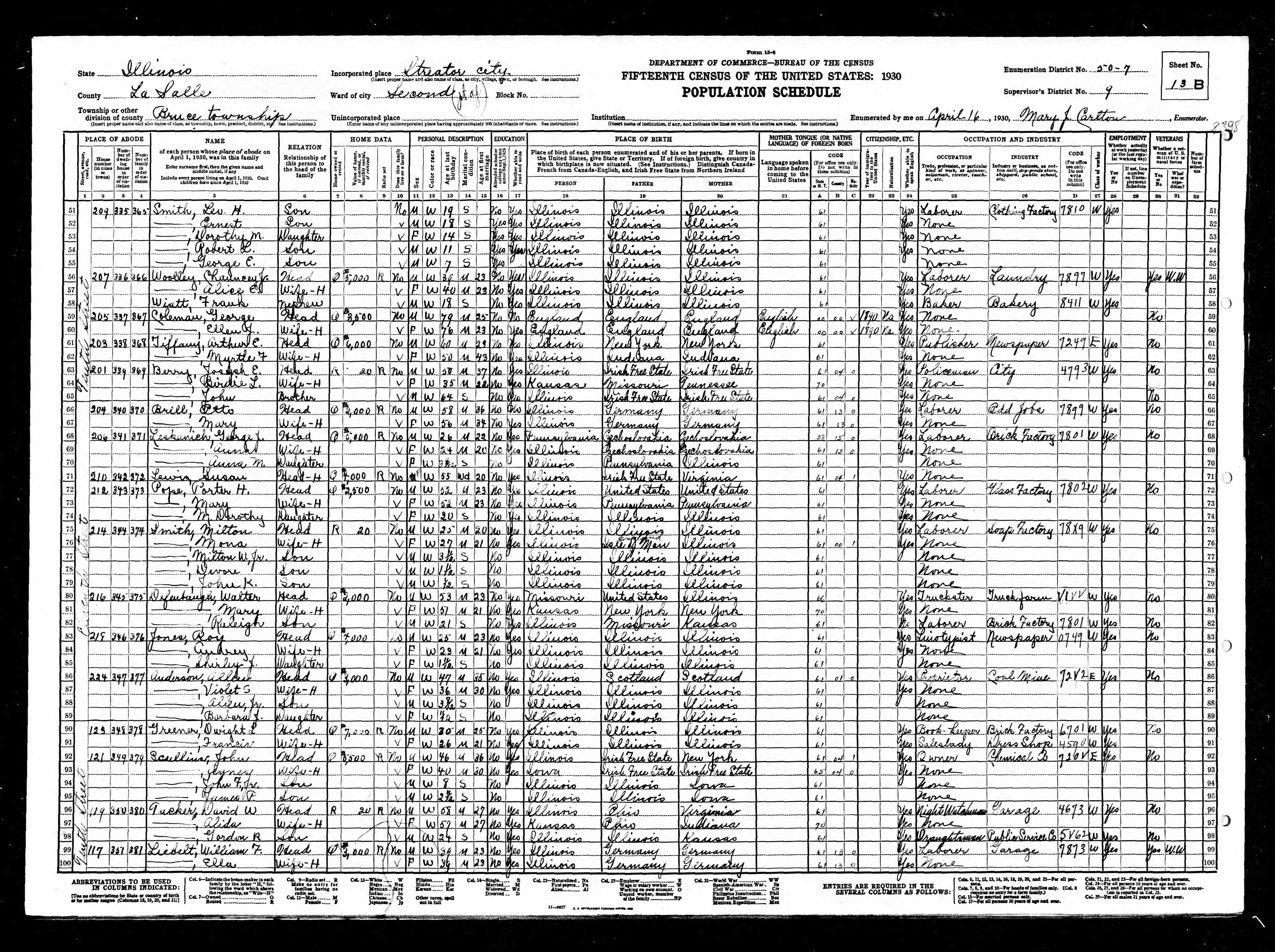
Homefront
The Illinois Valley, like many other communities across America, was heavily impacted by the events of World War II. More than a dozen men from the area were killed in the attack of Pearl Harbor, and citizens at home began to mobilize for war. The railroad yards in Streator, Illinois, tightened security, and in less than a month, German, Japanese, and Italian immigrants were ordered to forfeit radios, cameras, and firearms. Tire rationing, black-out drills, and first aid classes became common.
By spring 1942, the Seneca shipyard, Illinois Valley’s most significant contribution to World War II, was operational. The U.S. Navy contracted with the shipyard to produce LSTs, or Landing Ship Tanks. These ships eventually made their way down the Mississippi River, into the Gulf of Mexico, and eventually to the Atlantic and Pacific theaters of war.
Also notable for Streator and the surrounding area was the Streator Canteen. Hundreds of service members a day passed through the city aboard transport trains, and in the fall of 1943, community members began to organize ways to serve the visiting troops. Sandwiches, coffee, and even Easter eggs were handed out on the train platform.
German Prisoners of War (POWs) were used in Streator to fill the local canning factory’s labor demand. They were held in a camp in south Streator but were only utilized for a few weeks before transferring to their subsequent occupation.
Military Experience
On September 7, 1939, with his country on the brink of war, Wyatt enlisted in the U.S. Army. Transfer orders in 1943 took him across the Atlantic to Great Britain, his staging ground for France.
Wyatt was deployed with Company E, 262nd Infantry Regiment, 66th Infantry Division to strengthen the Allied forces at the Battle of the Bulge. On Christmas Eve 1944, he was aboard the Belgium troopship the LSI HMS Leopoldville for transport across the English Channel, from Southampton, England, to Cherbourg, France. Three British escort vessels made the journey with them. Two thousand two hundred thirty-seven troops from the 262nd and 264th Infantry Regiments were aboard the ship.
At 5:45 p.m., the Leopoldville was struck by a German torpedo, damaging the ship’s aft starboard side under the water’s surface. The number four hold on the ship quickly filled with water, causing the collapse of both F-deck and G-deck and the partial collapse of E-deck. Due to the rapid flooding, officers reported that no one from G-deck could have survived. By 8:40 p.m., the ship gave way and sank. It now rests at the bottom of the English Channel, only five miles off Cherbourg’s coast.
Wyatt is memorialized on the tablets of the missing at Normandy American Cemetery as he and 493 other service members were determined unrecoverable and buried at sea.

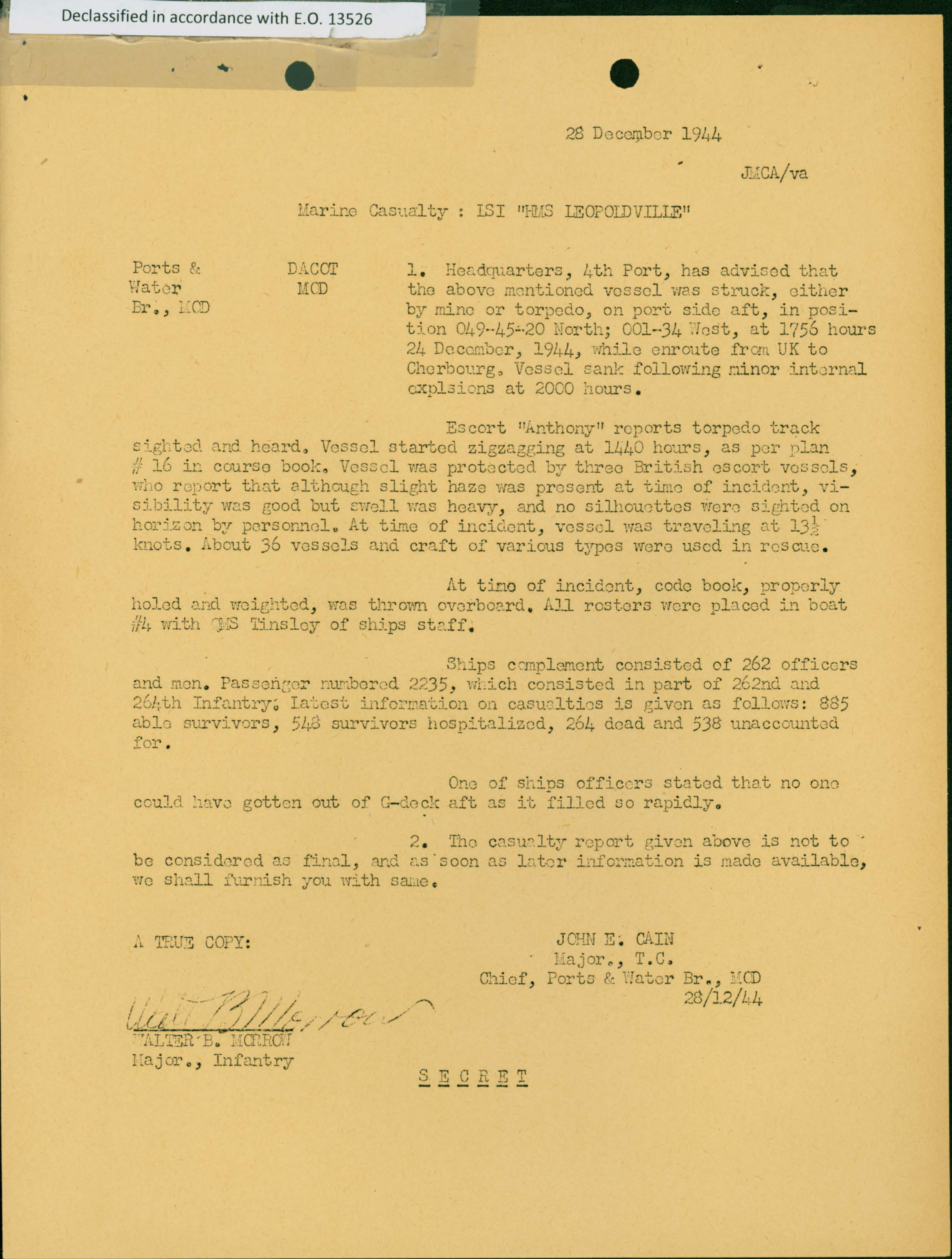
Eulogy
The 32 years of Frank Wyatt’s life were burdened with great difficulties and losses. Still, despite those obstacles, he persevered to serve his country honorably and gave the ultimate sacrifice: his life. Nearly 18 hours into his crossing of the English Channel and within a few miles of Cherbourg, the German submarine U-486 made a single torpedo strike that severely damaged but did not initially sink the Leopoldville. Two and a half hours of rescues followed, but the ship eventually gave in to its overwhelming damage. Over 1,200 men were rescued in that short and chaotic time period, but Frank was one of the 763 killed in action and one of the 493 who was unable to be recovered. His bravery and strength to keep our country safe will not be forgotten.
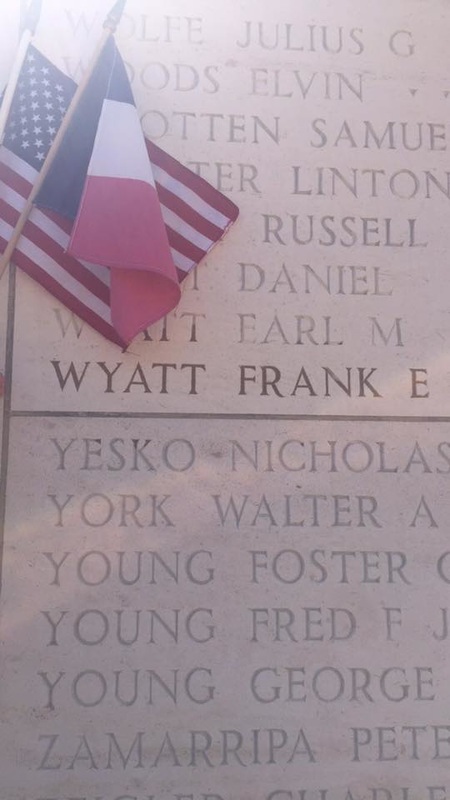
Bibliography
Primary Sources
Frank E. Wyatt. Illinois. Death and Stillbirths Index, 1916-1947. Digital Image. ancestry.com.
Frank E. Wyatt. Individual Deceased Personnel File, Department of the Army.
Frank E. Wyatt, Official Military Personnel File, Department of the Navy, Records of the Bureau of Naval Personnel, RG 24, National Archives and Records Administration – St. Louis.
Frank E. Wyatt. World War II Army Enlistment Records, 1938-1946. ancestry.com.
Illinois. LaSalle County. 1920 U.S. Census. Digital Image. ancestry.com.
Illinois. LaSalle County. 1930 U.S. Census. Digital Image. ancestry.com.
“Mrs. Lavina Wyatt Dies in Ottawa.” Streator Free Press Daily, March 7, 1916.
United States World War II Military Personnel Missing in Action or Lost at Sea, 1941-1946. Digital images. ancestry.com.
Washington. Walla Walla County. 1920 U.S. Census. Digital Image. ancestry.com.
Secondary Sources
Bluemer, R.G. Homefront: WW II in the Illinois Valley. Henry: M+D Printing, 2005.
Franklin, Paula Angle. Biography in Black: A History of Streator, Illinois. Streator: Weber, 1962.
“The Sinking of SS Leopoldville.” Uboat.net. Modified April 14, 2000. Accessed April 7, 2021. www.uboat.net/history/leopoldville.htm.

